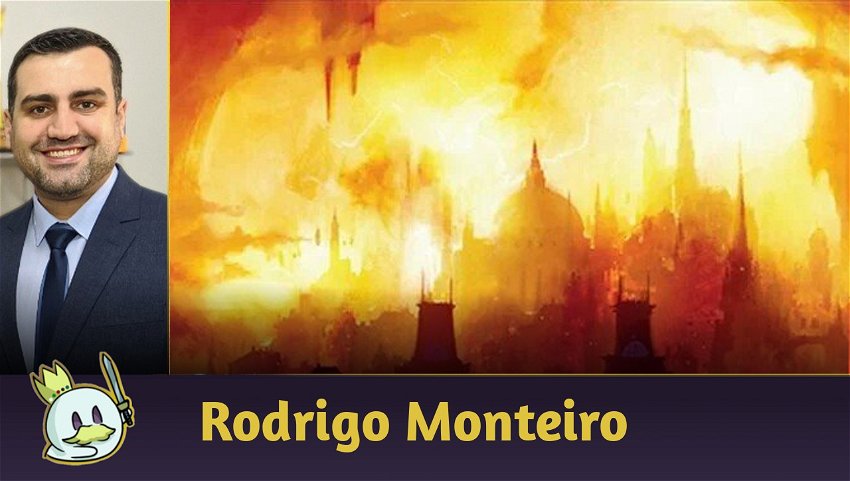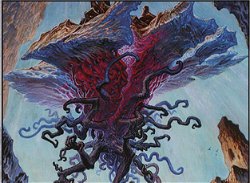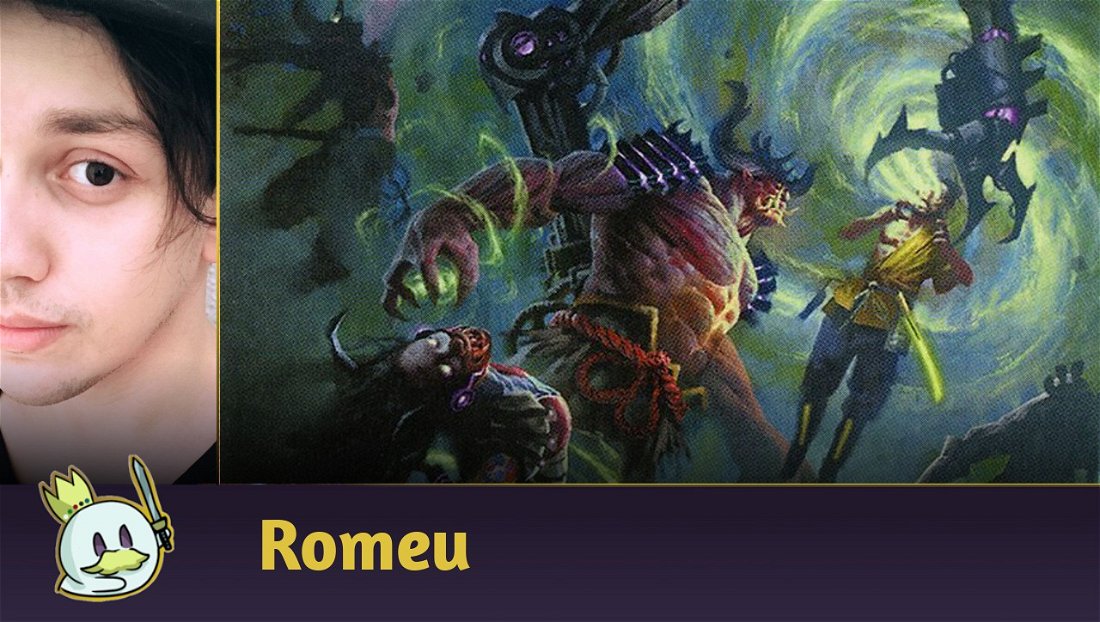I'm Rodrigo Monteiro, a Magic the Gathering player for over 20 years, and today I came here to discuss a deck that surprised many people this weekend: Calibrated Blast!
It's a very interesting and fun combo to play and that, moreover, has a Budget version that's very close to the original version, I'll talk a little about it later. If you want to surprise people with a very unexpected and fun list, this is the deck for you!
About the Deck
Calibrated Blast runs 38 lands, which isn't very common, however the vast majority of lands have some specific ability to help when going for the combo. For example, the new Kamigawa lands; Otawara, Soaring City, Boseiju, Who Endures and Sokenzan, Crucible of Defiance, in addition to having very relevant abilities against several decks, they still have the aggravating factor of not being countered and being hard to interact with.
It's a little far from being a Tier 1 deck, due to its lack of consistency in getting positive results. However, it is undoubtedly a strong and fun to play strategy, often surprising the most unsuspecting opponents.

Our main idea revolves around Calibrated Blast and Throes of Chaos, which in this case is to get Calibrated Blast with the Cascade and so you will reveal cards from the top of your library to reveal one of your huge creatures. That's right, the deck is full of giant creatures like Emrakul, the Aeons Torn, Shadow of Mortality, Autochthon Wurm and Scion of Draco that in several games you can cast from turn 3, imposing a large clock that often helps to sap the opponent's life and finish them off with a single Calibrated Blast.

When Calibrated Blast reveals the card, it deals damage to any target according to that card's converted mana cost. For example, when I find an Emrakul, the Aeons Torn, it deals 15 damage to the opponent right away.
Currently, where almost every deck runs fetch and shock lands, it's not hard to finish your opponent on turn 3 with just one Calibrated Blast. Today we will use the champion list of this weekend's Challenge, from the Brazilian LucasG1ggs.
Complete Version
This is the most complete version of the deck, which we will focus on. Later, I will post the Budget version.
You can see that even though we run tons of lands, they are extremely useful and versatile. We have Boseiju, Who Shelters All to make sure you can cast your Calibrated Blast without worrying about counterspells, we have Gemstone Caverns that often gets you ahead even on the Draw, in addition to some lands that deal damage to help reach the lethal damage in one hit.

On the sideboard we still have more lands with relevant abilities, like Bojuka Bog, Nephalia Academy which is wonderful against discard strategies, among others that we will talk more about in the sideboard guide.
In the current Metagame, Calibrated Blast has just found an opening to stand out. Honestly, I don't believe it will last for a long time because the great thing about this deck is the surprise factor, which is precisely what happened this weekend.
I looked on several websites for more relevant statistics about the deck, but as it may not have been much explored in the format, there are no consistent statistics for a more detailed evaluation.
Budget Calibrated Blast Decklist
Here the idea, stance and game mode are practically the same — what changes is the value and some complementary cards.
Mulligan and Postures
Definitely one of the most important points here is the Mulligan because as we only have 6 spells that will deal the most damage, we have to aggressively mulligan in several situations. Remembering that both Calibrated Blast and Throes of Chaos can be cast from the graveyard — the first with the flashback ability, and the second by paying its Retrace cost So, if you see at least 1 of them in your hand, that's enough to have a strong keep.
The second keep option is to cast Scion of Draco, which can be easily cast in turn 2 if you have fetch lands to search for a Triome and a Shockland, making it possible to have 5 different land types on Turn 2. That way we can exert strong pressure from the beginning of the game, and when we lower our life, we can cast Shadow of Mortality, often being able to turn the game around, after all a 7/7 creature puts a strong board presence against your opponent.
As for the posture itself, you should always be cautious not to take a counterspell on your only strong spell on Game 1. Be careful, as Spell Pierce has been a maindeck card in several popular decks lately. The rest is time: if you see that the opponent has a slower strategy, don't get carried away — often you only need to hit one Calibrated Blast to end the game.
To have a so-called “God Hand” with this deck, you don't need much, just 3 lands and 1 Calibrated Blast. Of course, the more Calibrated Blast or Throes of Chaos the better, right?

Against Control, don't forget to always play around counterspells, as they will always have one waiting for our spells. So, wait for the right moment, be patient and don't rush things up.
Against Aggro, you can calculate the turns, always careful not to take any surprise cards with haste, for example, and end up dying with your main card in hand without casting because you thought it would last another turn. Since you don't need to be afraid of counterspells, you can go for the combo early on, but if it's necessary to avoid a lethal or remove a creature that can win the game for the opponent, remember: it's possible to direct the Calibrated Blast damage on a creature — but only as a last resort!
The Midrange, as always, are the most problematic, as they can deal with the combo and can impose a dangerous clock on you. But overall, it ends up being a very favorable match, as it's not always that they will have the counterspells at the ideal moment and usually doesn't impose a very fast clock, allowing you to have more time to achieve lethal damage.
Sideboard Guide
Murktide
Always the most present deck in the format, the classic Murktide that fits in the Midranges. As I said before, I believe it is a matchup where we must be cautious not to take a counterspell on our only relevant card and end up losing the game due to haste or anxiety.
Side in

Side out

The most important thing in this matchup is to cast your spells without worrying about the counterspell, so that's why we added another 3 Boseiju, Who Shelters All.
Bojuka Bog is to prevent the opponent from reaching the delirium fast enough, and also to avoid them casting Murktide Regent too early. If this is unavoidable, we also add one more Otawara, Soaring City to return an already buffed Murktide Regent or Ledger Shredder.
And what comes out are the least relevant cards in this matchup, as 1 damage is useful, but it's almost always as a flexible slot for side lands, and Sokenzan, Crucible of Defiance aren't that useful since your opponent will most likely always have blockers against them.
Note: Always keep an eye out when the opponent is seeking basic Islands, as they will most likely cast Blood Moon. Even though our main spells are red, it can get in the way of Boseiju, Who Shelters All.
Elementals
I think it's a favorable game for us, as they can't impose a clock and only some versions have counterspells, and I believe this deck managed to make an impressive result this week for having a favorable matchup against Elementals.
Anyway, it's always good to play around counterspells, which is easy considering that you don't have a strong clock on you.
Side in

Side out

Here I made the option as if it were the 4C version of the Elementals, with counterspells, but if you are confident that it is another version, you can choose the following:
Side in

Side out

On Game 2 or Game 3, the opponent will most likely not be expecting a cast from any creature that can impose a clock on them, so keep in mind that Scion of Draco's plan might be a great keep at this point.
Boseiju, Who Endures are mainly for possible Rest in Peace or even Leyline of Sanctity. These are rare cases, but as we have not-so-needed slots in the main for this matchup, it's worth replacing them.
Living End
I believe it is a balanced matchup, as the opponent has too few interactions with our combo, only Force of Negation on the main deck and possibly a Grief, but between matches I've watched and others I've played tend to be close to 50/50 — They often end up cycling Street Wraith, which leaves them on the reach of just one Calibrated Blast.
A tip that obviously depends on your starting hand, but it can be a strategy a bit different from the traditional one and that has worked for me a few times is: when you are on the Draw, you can hold the card you drew to have 8 cards in your hand until the end of turn and discard an Autochthon Wurm, for example. This will make your opponent think twice before casting a Living End, giving you the time you need to go into your combo.
Side in

Side out

Pay attention, because in this match we ended up changing numerous cards post-side, however, they are land and will not affect the structure of the deck. One more note that goes for all post-side matchups, but more specifically for this one, is the Gemstone Caverns — if you're on the play, you can remove them in place of Sokenzan, Crucible of Defiance or some other land that may have some better use in the game.
Watch out for Endurance as they can mess up your flashback plan, so depending on the situation you can wait to cast on the pass and already cast again at the flashback before they can use Endurance (of course, they can still cast it for free, but you make it less likely to happen)
Save Boseiju, Who Endures for Leyline of Sanctity. Don't play lands unnecessarily, they may be missed in the future, know that you need of maximum 5 lands to cast everything necessary.
One last tip is that sometimes if your opponent played a Living End quickly, putting few creatures on the battlefield, maybe after the first hit you can cast a Shadow of Mortality and stabilize the board.
Hammer Time
Here we have a very difficult matchup, but in most cases it ends up being very fast. The opponent can go off out of nowhere, you don't have much to do except play a Calibrated Blast to avoid the lethal and remove the only creature from the opponent's battlefield, allowing you to manage the time to cast the flashback directly on the opponent this time. Or also, the opponent can keep an average hand that has no response to your combo and just concedes without major concerns.
But remember to be careful with the UW versions, as they may have Spell Pierce on the maindeck, and the Mono White versions may have Mana Tithe post-side. If they aren't rushing into lethal, don't go off without making sure the opponent doesn't have a counterspell. Also, watch out for Inkmoth Nexus, which is always an imminent lethal risk.
Side in

Side out

Post-side this matchup can get very interesting, as we have a strong sideboard, so pay attention to the keep. Always look for at least one hate to thwart the opponent's initial turns — often, if you manage to prevent their initial plan, it ends up taking a long time for them to find the specific missing piece. You, on the other hand, only need one piece.
Otawara, Soaring City and Boseiju, Who Endures should be played for their channel costs. Never forget that, the deck has 38 lands, you will hardly miss them as land drops.
Burn
The plan here is quite straightforward... mana, mana, mana, Calibrated Blast, and sometimes it's GG right here since Burn usually doesn't care much about fetch and shock lands dealing damage to them.
Jokes aside, in Game 1 it's a race, so try not to show that you're playing Calibrated Blast in turns 1 and 2 so that they shock themselves mercilessly and often ends up in the reach of a single Calibrated Blast.
We don't have anything very relevant against Burn either on the maindeck or on the sideboard, so it's considered a game where luck plays a role.
Side in

Side out

Here every singe life point counts, so we took out the Boseiju, Who Shelters All, as it has no use here, we keep the deserts that deal direct damage, and remove the Desert, which wouldn't kill any of Burn's creatures.
Pay close attention to Roiling Vortex when casting Throes of Chaos, as it will deal 5 when you decide to cast Calibrated Blast that will come in the Cascade. That's why we add Boseiju, Who Endures.
The Goblin Guide will often give you some extra lands, after all, we have 38 lands. Eidolon of the Great Revel won't make much difference either, so go to the race and prefer to keep hands with the combo. Avoid slow hands or strategies like Scion of Draco or Shadow of Mortality, which, despite being tempting, are very risky in this matchup.
Conclusion
That's it, folks! These are definitely the matches you'll face the most in the current meta. Don't be afraid to Mulligan with this deck, always play around counterspells, they are the main disruption against this strategy.
Any questions I'm available, just leave it in the comments. Thank you very much for your attention, and until the next time!















— Comments 0
, Reactions 1
Be the first to comment